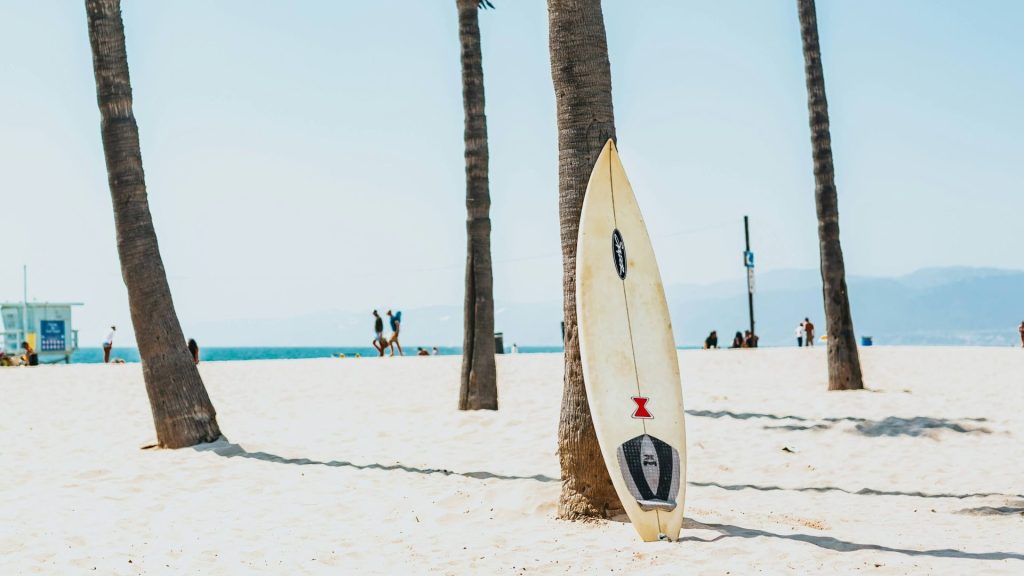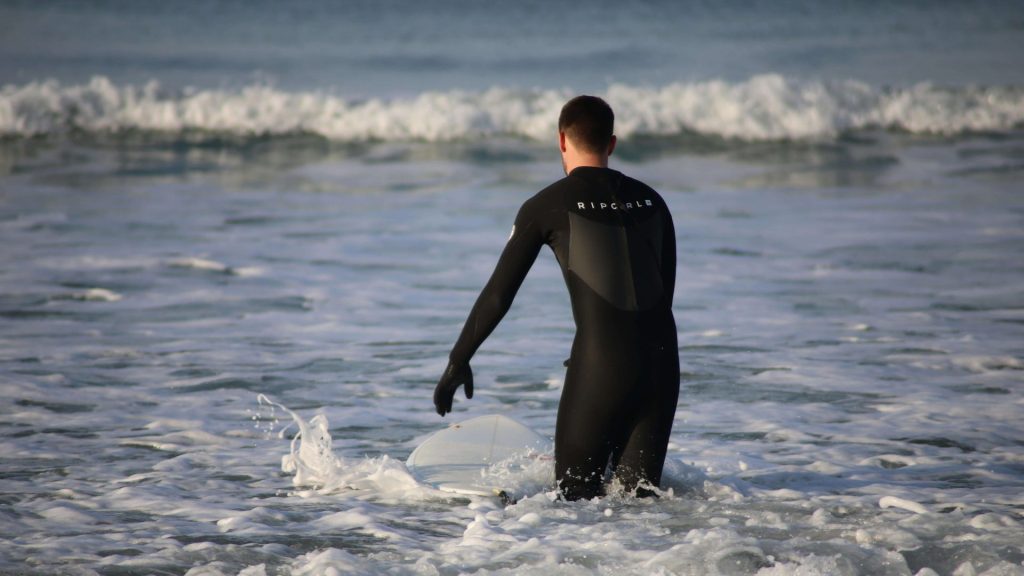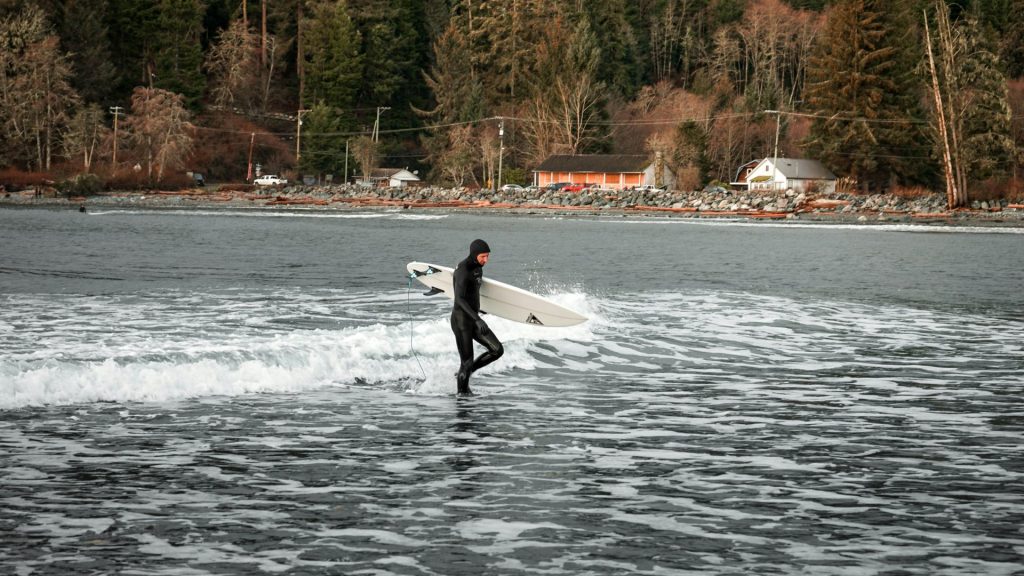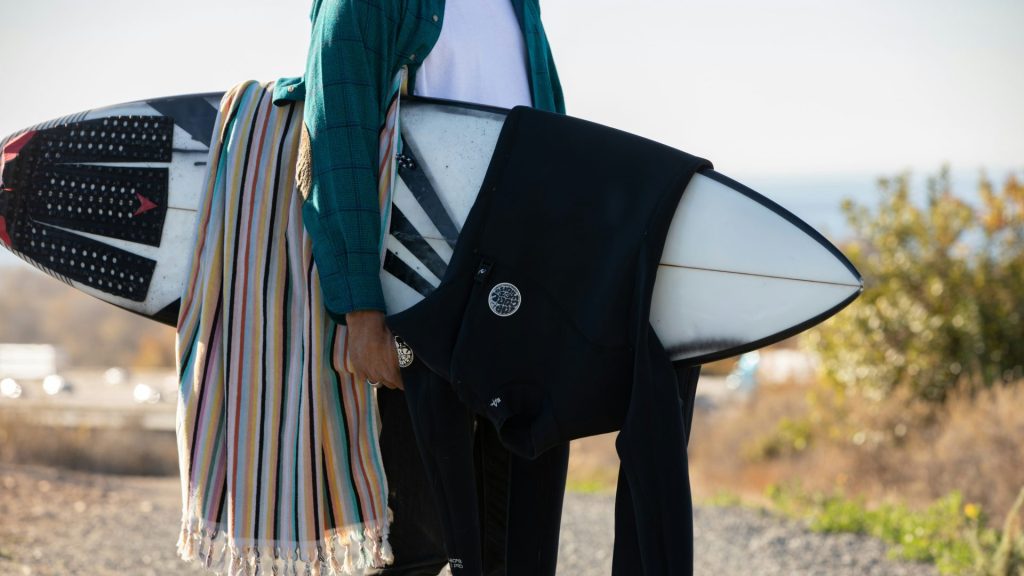How Much Does Surfing Cost Actually?

Surfing itself is a free ocean activity making it an inexpensive sport, however the cost of equipment needs to be considered.
How much does surfing cost? It will differ per person, but on average the cost of surfing per year can be anything from $1000 - $4000+ depending on how much you travel and what surf equipment you purchase.
To Rent or To Buy?
I have rented and purchased surf equipment in several countries and the essential items needed are always the same. The choice to rent or to buy is always a tough decision to make, depending on how long you stay at a given destination.
Considering how much does surfing cost begins with a surfboard and wetsuit. The extent of these costs will depend on whether you are renting or buying the equipment.
Buy Surfboard and Wetsuit: $500 to $1500
Rent Surfboard and Wetsuit (per day): $50 to $75 dependent on location
Below is the full price breakdown for the costs of surfing.
Price Breakdown: How Much Does Surfing Cost
- Wetsuit: $100 - $650
- Surfboard: $400 - $1500
- Surfboard Leash: $20 - $95
- Surfboard Wax: $5 - $12
- Board Shorts/Swimsuit: $15 - $100
- Fins: $50 - $185
- Wetsuit Gloves: $35 - $85
- Wetsuit Boots: $40- $175
- Wetsuit Hood: $25 - $80
- Surfboard Bag: $75 - $230
- Traction Pad: $45 - $110
- Go Pro: $150 - $750
- Surf Lessons: $50 to $100 per hour
- Travel Costs: $1000+
- Maintenance and Repairs: $40 - $200+
- Beach Access or Membership Fees: $50+
- Insurance: n/a
Surfing Cost Per Year?
The annual cost of surfing can vary widely depending on factors like equipment purchases, travel expenses, and additional activities. But for many enthusiasts, it ranges from a few hundred to several thousand dollars.
Surfing Cost For Beginners?
For beginners, the initial cost of surfing typically includes expenses such as purchasing a beginner-friendly surfboard, essential safety gear like a leash and wetsuit, and possibly taking introductory surf lessons.
On average, beginners can expect to spend anywhere from $500 to $1000 or more for their first year of surfing, depending on factors like location, equipment quality, and lesson fees.
Surf Lessons Cost
Surf lesson costs can vary depending on the location and the services offered.
In popular surfing destinations like Hawaii, Florida, and California, prices may differ due to factors such as demand, instructor expertise, and overhead expenses.
On average, beginners can expect to pay around $50 to $100 per hour for a surf lesson.
- In Hawaii, where surfing culture thrives and the waves are renowned, surf lessons may range from $50 to $150 per hour.
- In Florida, known for its consistent surf conditions and vibrant coastal communities, lessons typically cost between $50 and $100 per hour.
- In California, home to iconic surf spots and a rich surfing heritage, surf lessons may also fall within the $50 to $100 per hour range.
Wetsuit $100 - $650

A wetsuit is a vital piece of equipment for surfers, particularly in colder water conditions. Made from neoprene material, wetsuits provide insulation and protection against the elements.
The price range reflects variations in thickness, quality, and brand reputation.
Cheaper wetsuits may offer less warmth and durability, while higher-end options provide better insulation and flexibility, allowing for longer surf sessions.
Investing in a quality wetsuit is essential for comfort and safety, enabling surfers to enjoy extended time in the water without succumbing to cold temperatures.
Surfboard $400 - $1500

The surfboard is the quintessential tool for riding waves, available in various shapes, sizes, and materials to suit different skill levels and wave conditions.
Prices vary based on factors such as construction materials (e.g., foam, fibreglass, epoxy), board dimensions, and brand reputation.
Beginners need to consider the best surfboard size for them opting for softer, more stable foam boards, while advanced surfers might prefer high-performance fibreglass or epoxy models.
Surfboard Leash $20 - $95
A surfboard leash, also known as a leg rope, is a safety device that attaches the surfer to their board, preventing it from drifting away in the surf.
Prices vary based on factors such as length, thickness, and durability.
Thicker leashes or comp leashes will have added padding making ankle cuffs more comfortable and durable, while cheaper options may be less robust and prone to snapping.
Surfboard Wax $5 - $12

Surfboard wax is applied to the deck of the board to provide traction and grip, enhancing the surfer's ability to maintain balance and control while riding waves.
While relatively inexpensive, the quality of surf wax can impact its effectiveness and longevity.
Higher-quality waxes are formulated to withstand longer sessions and varying water temperatures, offering better grip and performance.
Board Shorts/Swimsuit $15 - $100
Board shorts or swimsuits are worn by surfers to provide comfort and mobility in the water. Prices vary based on factors such as material, design, and brand.
Quick-drying and durable fabrics are preferred for surfing, offering flexibility and comfort during extended sessions.
How much does surfing cost will depend on the quality of equipment you purchase, especially including board shorts and swimsuits.
Fins $50 - $185
Fins are attached to the underside of the surfboard and play a crucial role in steering, stability, and manoeuvrability while riding waves.
Prices for fins depend on factors such as material, size, and design.
High-quality fins made from fibreglass or carbon fibre offer superior performance and responsiveness compared to cheaper plastic options.
Wetsuit Gloves $35 - $85

Wetsuit gloves are an essential accessory for surfers, especially in colder water conditions.
They provide insulation and protection for your hands, allowing you to maintain dexterity and grip on your surfboard.
Quality wetsuit gloves obtain high quality, thickness, and features such as reinforced palms for durability.
Investing in a good pair of wetsuit gloves can enhance your comfort and extend your surfing sessions in chilly waters.
Wetsuit Boots $40 - $175
Wetsuit boots, also known surf boots are designed to keep your feet warm and protected while surfing, particularly in cold water or rocky conditions.
They typically feature thick neoprene construction and durable soles for traction and insulation.
The price range varies based on factors such as thickness, material quality, and added features like ankle straps or split toes.
Wetsuit Hood $25 - $80

A wetsuit hood provides crucial protection for your head and neck in cold water, helping to retain body heat and prevent heat loss.
It's an essential accessory for surfing in chilly conditions or during winter months.
The price range reflects differences in material thickness, construction quality, and features such as adjustable cinches for a snug fit.
Surfboard Bag $75 - $230
A surfboard bag is a practical accessory for transporting and protecting your surfboard from dings, scratches, and UV damage.
It provides padded insulation and a shield against external elements during travel or storage.
The price range varies depending on factors such as size, material quality, padding thickness, and additional features like pockets or shoulder straps.
Investing in a durable surfboard bag helps prolong the life of your board and ensures peace of mind when travelling to and from the beach.
Traction Pad $45 - $110

A traction pad, also known as a deck grip or traction deck, is a textured foam pad that provides grip and traction for your back foot while surfing.
It enhances your control and stability on the board, especially during manoeuvres such as turns or aerials.
The price range reflects differences in material quality, design, and features like arch support or kick tails.
Adding a traction pad to your surfboard improves your performance and comfort in the water, allowing for smoother and more precise movements.
GoPro $150 - $750
A GoPro camera is a popular accessory for surfers looking to capture their surfing adventures and share them with others.
It's a compact and waterproof camera that can be mounted to your surfboard, helmet, or body to capture high-quality video and photos while you ride waves.
The cost of a GoPro varies depending on the model, features, and accessories included, but it's generally considered a worthwhile investment for documenting your surfing experiences and creating memorable content.
Surf Lessons $50 - $100 Per Hour
Surf lessons are invaluable for beginners and intermediate surfers alike, offering professional instruction and guidance to improve skills and safety in the water.
Costs can vary depending on factors such as location, duration, group size, and instructor experience.
Beginners can expect to learn essential surfing techniques, ocean safety, and board handling skills through structured lessons, typically ranging from $50 to $100 per hour.
Advanced surfers may opt for specialised coaching to refine their abilities or tackle more challenging waves, with prices varying accordingly.
Travel Costs $1000+

Travel costs encompass expenses related to reaching surf destinations, including transportation, accommodation, meals, and incidentals.
Whether travelling locally or abroad, surfers should budget for airfare, gas, rental cars, or public transportation, as well as lodging options such as hotels, hostels, or camping grounds.
Depending on the destination's accessibility and amenities, travel costs can range from a few hundred to several thousand dollars per trip.
Maintenance and Repairs $40 - $200+
Maintaining surf equipment is essential for prolonging its lifespan and ensuring optimal performance in the water.
Costs for maintenance and repairs may include dings, waxing, fin replacement, and general upkeep.
While some tasks can be DIY, others may require professional assistance or specialised tools and materials.
Budgeting for regular maintenance helps prevent damage and extends the longevity of surfboards, wetsuits, and accessories, reducing the need for costly replacements down the line.
Beach Access or Membership Fees $50+
Access to surf beaches may require payment of entrance fees, parking fees, or membership dues, depending on the location and regulations.
Some beaches offer free access to the public, while others may require permits or passes for certain activities or facilities.
Surfers should research local beach access policies and fees to ensure compliance and avoid fines or restrictions.
Membership fees for surf clubs or organisations may provide exclusive benefits such as organised events, equipment rentals, or beach amenities, with costs varying depending on the club's offerings and membership tiers.
Insurance
Insurance is essential for protecting surfers against unforeseen risks and liabilities associated with the sport. Coverage options may include health insurance, travel insurance, and specialised surfboard insurance.
Health insurance provides financial protection in case of injuries or medical emergencies while surfing, covering expenses such as hospitalisation, doctor visits, and treatment. Travel insurance offers reimbursement for trip cancellations, delays, or interruptions, as well as emergency medical evacuation and repatriation.
Surfboard insurance protects against loss, theft, or damage to surf equipment, offering peace of mind and financial security for valuable investments. Premiums and coverage limits vary depending on the insurer, policy terms, and individual circumstances.
What Equipment Do You Need to Start Surfing?
To start surfing, you'll need essential equipment tailored to your skill level and local conditions.
This includes a beginner-friendly surfboard, typically a soft-top or foam board, along with a wetsuit suitable for the water temperature in your area. Attach a surf leash to prevent your board from drifting away, and apply surf wax for traction.
Optional accessories like wetsuit boots, gloves, and a surfboard bag can enhance comfort and convenience as you get started, but these added purchases will influence your outcome on how how much does surfing cost.
Is Surfing Expensive?
How much does surifng cost will vary based on factors like equipment quality, travel expenses, and additional activities.
While the initial investment in gear may seem significant, ongoing costs can be managed with budget-friendly options and careful planning.
Beginners can start with basic equipment and gradually upgrade as needed, while enthusiasts can tailor their expenses to align with their surfing goals and financial situation.
Ultimately, the joy and fulfillment that surfing brings often outweigh the associated costs, making it a rewarding and worthwhile pursuit for many.
Summing It Up: What To Do Now
Now you have a budget set for how much does surfing cost throughout the year, you can select which equipment is best for you.
But remember surfing really is simple all you need is a wetsuit, surfboard, leash and a bit of wax and your good to go! Don't over complicate it!
Frequently Asked Questions
Is surfing expensive to get into?
While there are initial costs for equipment and lessons, surfing can be accessible to individuals with different financial means through budget-friendly options and careful planning.
Is 50 too old to learn how to surf?
No, it's never too late to learn how to surf, as age doesn't determine one's ability to enjoy and progress in the sport with patience and determination.
Who is the richest surfer in the world?
Kelly Slater is often regarded as one of the wealthiest surfers in the world due to his successful career, endorsements, and business ventures.
Is 25 too old to start surfing?
No, there's no age limit to start surfing, as many individuals begin their surfing journey at 25 and even later, with dedication and proper instruction.
Is surfing a wealthy sport?
While surfing can require investment in equipment and travel, it's not exclusively a wealthy sport, as there are budget-friendly options and opportunities for individuals from diverse backgrounds to participate.
Do pro surfers get paid?
Yes, professional surfers can earn money through sponsorships, competition prize money, endorsements, and media appearances, though the amounts can vary widely depending on individual success and industry factors.


